| Photo of the month – November 2024 |
[German version] |
“Potatoes on the Road”
We dedicate this Photo of the Month to the potato, one of the most important basic foodstuffs and an item which can be found on practically any German menu.
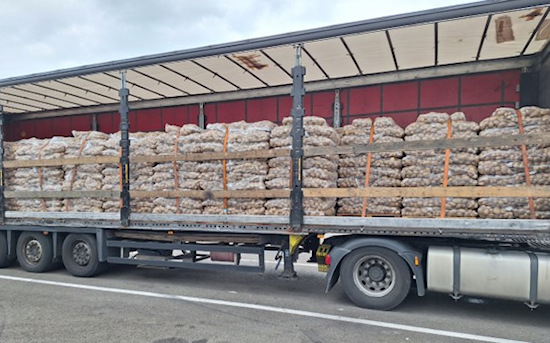
Figure 1 [Raymond Lausberg]
A trailer with a full load of potatoes stacked on 21 pallets. The potatoes are packed in synthetic plastic net sacks. Each pallet weighs slightly over a tonne. For reasons of load distribution, the first three pallets are loaded singly, after which (with one exception) the pallets are loaded in pairs next to one another.
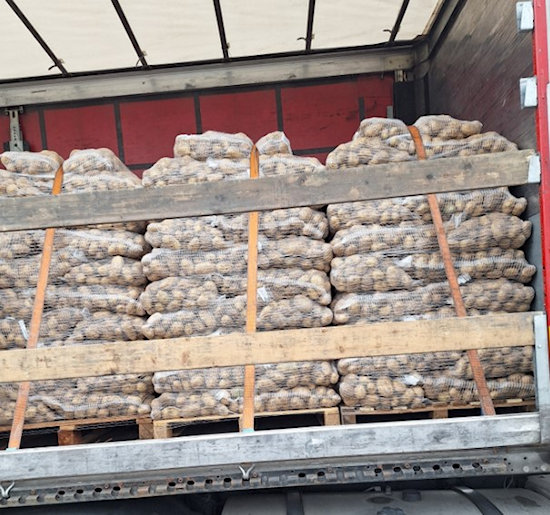
Figure 2 [Raymond Lausberg]
There was a tight fit at the front and an attempt has been made to secure the load using tie-down lashings.
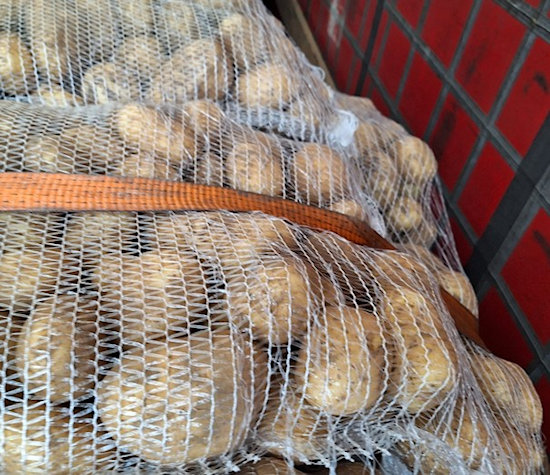
Figure 3 [Raymond Lausberg]
Figure 3 clearly shows how the belts have worked their way into the load, and it is easy to see how any pretensioning that was applied would very quickly dissipate as the round-shaped load, which is packed loose in the sacks, gives way.
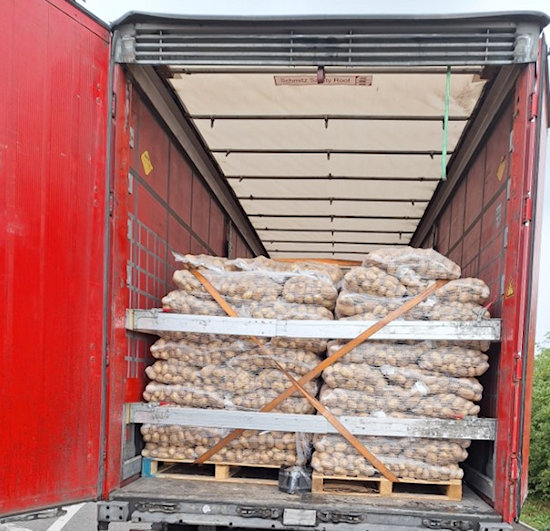
Figure 4 [Raymond Lausberg]
At first glance, the securing to the rear makes a good impression because two direct lashings were used to try to restrain the load effectively. It makes sense that the two cargo planks were integrated into the load securing measures on the right-hand side of the vehicle, because this makes it possible to include far more sacks than when using belts alone. That this was not done on the left-hand side of the vehicle is due to the fact that the cargo planks were not in contact with the load, meaning that there was a risk they would be bent by the pretensioned belts. We would have preferred a much better “distribution of pressure” here. However, our greatest criticism is reserved for the way the belts were pretensioned.
Video 1 [Raymond Lausberg]
When the pretensioning is as poor as this, the load slips or tilts in the slack belts and it is then impossible for them to have any load securing effect. Given that the pressure is already poorly distributed, it would probably not be possible for the load securing equipment to restrain parts of the cargo if it were subjected to a load.
Securing the load:
As always, there are a number of different ways of transporting the load securely. For example, the pallets could be transported in a box body. If the gaps could be filled in and load securing to the rear ensured, then that would be one solution.
However, today we want to have a look at another solution, namely securing the load using nets and/or load securing tarpaulins. We would lay these over three rows of pallets at a time and cross over the belts at the ends to produce good load securing to the sides. To do this, the pallets must be loaded in such a way that there is enough room after every three rows to pass the load securing equipment across from right to left or left to right and tension it. In the areas in between, the tarpaulins or nets are held in place with tie-down lashings.
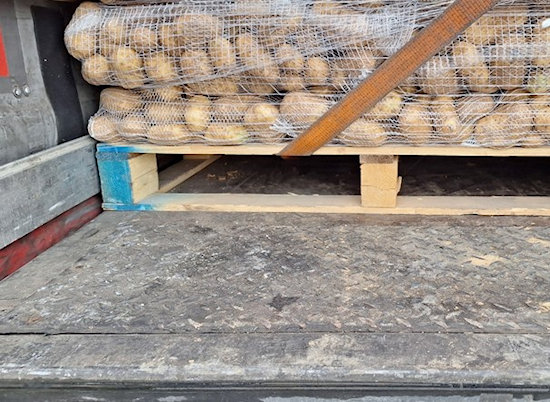
Figure 5 [Raymond Lausberg]
We assume a coefficient of friction of μ = 0.3, even though the loading surface is not as clean as we would like. Because we need space to secure the load after every three rows of pallets, it now also has to be secured against forward movement. To do this, we must, for example, attach direct lashings, of the sort used on this vehicle to guard against backward movement, to each of the load blocks.
Depending on the stability and design of the tarpaulins or nets, it might even be possible to attach this securing equipment to them.
What we cannot judge without first testing it is whether a long-term pretensioning effect can be achieved using load-securing tarpaulins or nets. We fear that this might not be possible because the load itself does not have the necessary resistance. For that reason, we would have to use direct lashings.
Your load securing columnists wish you a safe autumn!
Back to beginning
